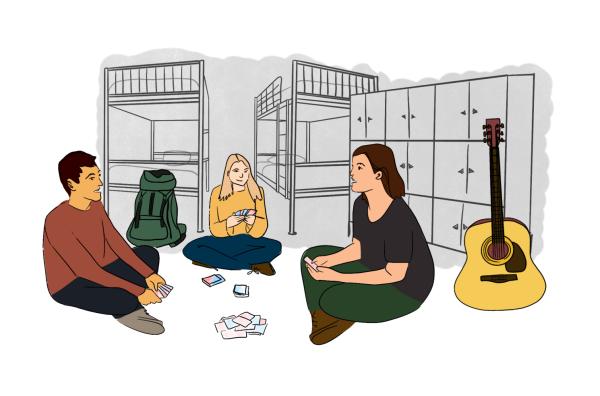I Love Valentine’s Day Because of What It’s Overcome
Why does everyone hate celebrating love?
Valentine’s Day was awesome in elementary school, full of class parties and sparkly cards and candy-induced sugar comas. Now, a decade later, it feels like everyone around me ended up loveless and bitter cynics who bemoan Valentine’s Day as the “worst holiday ever.”
Critiques of Valentine’s Day seem to fall in two categories: people either believe it’s a fake holiday created by the greeting card industry to further commercialize American life, or that it is heavily gendered and excludes anyone not in a happy and mainstream romantic relationship.
In truth, there is certainly a specific kind of stereotypical Valentine’s Day celebration pushed by media and mass-marketing campaigns, emphasizing romance and relationships. Traditional Valentine’s Day expectations are centered on heteronormative white couples, and say that women are supposed to judge their value by what they receive from their male partner, and men are supposed to signify their love with money. Maybe Valentine’s Day is just a Hallmark holiday, created to sell cheap teddy bears and red roses and chocolate hearts, but there are even deeper issues that must be addressed.
Valentine’s Day has historical links to exclusion and discrimination, which are still present today. However, with landmark Supreme Court cases like Loving v. Virginia (legalized interracial marriage) and Obergefell v. Hodges (legalized gay marriage), as well as the recently passed Respect for Marriage Act (codifying Obergefell and Loving), American love is more equitable than ever. This is not to belittle the reality of anyone targeted for their identity or relationships, but to recognize that Valentine’s Day is now even more worth celebrating.
Valentine’s Day can go beyond trinkets and superficial celebrations. It doesn’t have to be sad or exclusive or stressful, and it doesn’t have to be a source of resentment or loneliness. Valentine’s Day is about celebrating the love you have for yourself and others, and showing people how much you care about them. It is a day dedicated to gratitude and kindness– things with which we could all do with a little more. In queering Valentine’s Day, it is possible to find a way to enjoy the day without upholding past exclusive norms. The fraught history of Valentine’s Day is inexcusable, but it doesn’t diminish the value of a holiday that has been reclaimed and should be open and accessible to all.
Additionally, Valentine’s Day is free of the religious constraints plaguing so many other “American” holidays. US laws and culture prioritize Christian-centric calendars, building school breaks and work schedules around the assumption that days like Christmas and Easter are nation-wide celebrations. Valentine’s Day escapes that particular issue. While Valentine’s Day does have extremely vague religious ties, people in the US generally consider it a secular holiday. In general, love can be appreciated across cultural lines, breaking through demographic groups. Valentine’s Day has the potential to be a unifying holiday, bringing Americans together in celebration of the love they share for people in their lives.
Valentine’s Day is my favorite holiday. It can be simple and sweet or big and over-the-top, inexpensive or extravagant. There’s no “right” way to celebrate, whether it be with your best friends or your significant other. Personally, I love all the superficial pink and hearts and rom-coms, but if that’s not your thing there are alternatives for any taste. What I love most about Valentine’s Day is what it celebrates today. At its core, Valentine’s Day is an expression of the love we have for one another.
Valentine’s Day is the only day of the year earmarked for spreading joy to everyone in your life you care about. It is a day to honor what love means to you, whoever you choose to celebrate with.

LJ Coady is a junior from Houston, TX concentrating in political science with minors in history and religion. She has previously served as a writer for...











